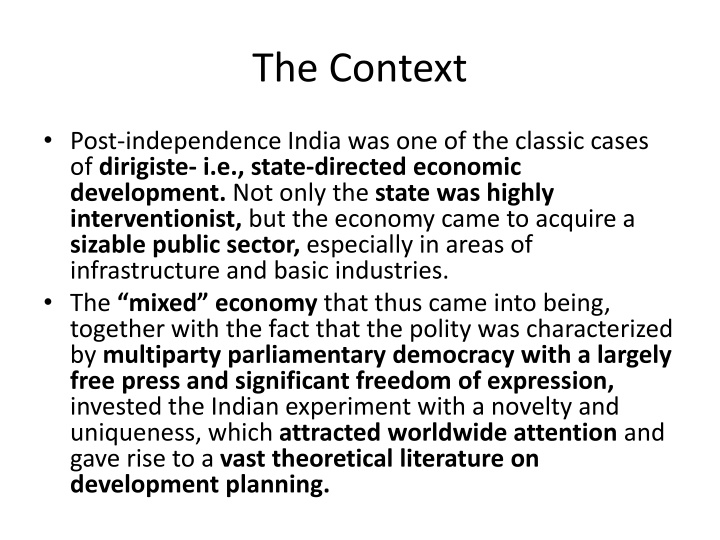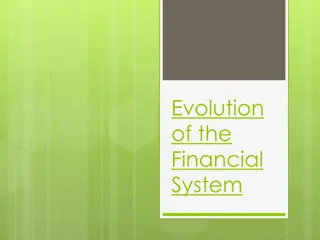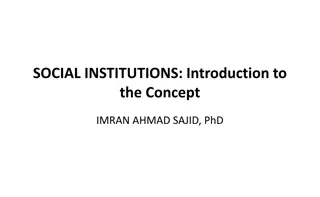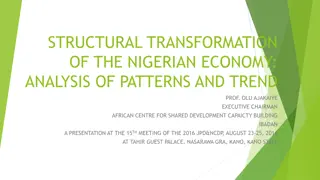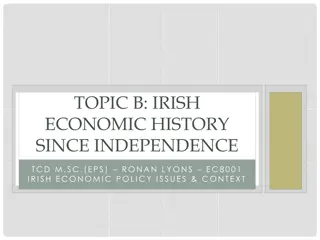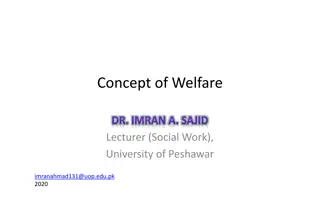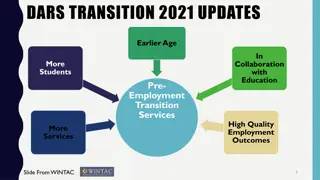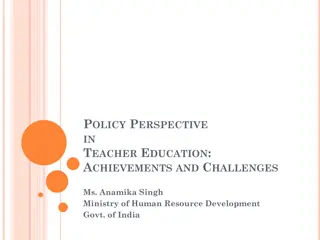Structural Transition and International Economic Institutions in Post-Independence India
Post-independence India initially focused on state-directed economic development, leading to a sizable public sector. However, in 1991, the country shifted towards a structural adjustment program, embracing liberal imports, market deregulation, privatization, and financial liberalization. This transition was influenced by changed international circumstances and the role of institutions like the IMF and World Bank, marking a significant historical shift in India's economic policies.
Download Presentation

Please find below an Image/Link to download the presentation.
The content on the website is provided AS IS for your information and personal use only. It may not be sold, licensed, or shared on other websites without obtaining consent from the author.If you encounter any issues during the download, it is possible that the publisher has removed the file from their server.
You are allowed to download the files provided on this website for personal or commercial use, subject to the condition that they are used lawfully. All files are the property of their respective owners.
The content on the website is provided AS IS for your information and personal use only. It may not be sold, licensed, or shared on other websites without obtaining consent from the author.
E N D
Presentation Transcript
The Context Post-independence India was one of the classic cases of dirigiste- i.e., state-directed economic development. Not only the state was highly interventionist, but the economy came to acquire a sizable public sector, especially in areas of infrastructure and basic industries. The mixed economy that thus came into being, together with the fact that the polity was characterized by multiparty parliamentary democracy with a largely free press and significant freedom of expression, invested the Indian experiment with a novelty and uniqueness, which attracted worldwide attention and gave rise to a vast theoretical literature on development planning.
Broad Outlines of the Programme of Structural Adjustment India s transition in 1991 to a programme of structural adjustment which entails a regime of liberal imports , a progressive removal of administrative controls, including a move to free markets in foodgrains and a whitling down of food subsidies, a strictly limited role for public investment, the privatization of publicly owned assets over a wide field, an invitation to multinational corporations (MNCs) to undertake investment in infrastructure under a guaranteed rate of return and financial liberalization that would do away with all priority sector lending and subsidized credit, is an event of great historical significance.
International Conjuncture and Accentuation of Contradictions Underlying this transition is a changed international conjuncture on the one hand and an accentuation of the contradictions of the dirigiste regime in the other. Though the transition could have been avoided by an alternative strategy, according to some scholars, but the changed conjuncture did prepare the soil for structural adjustment . It would be worthwhile to discuss here the changed international conjuncture underlying the role of Bretton Woods institutions, which has been vital.
The Role of IMF and the World Bank Traditionally, there have been significant differences between the International Monetary Fund (IMF) and the World Bank. But these have narrowed over time, and the reasons for this narrowing constitute an important element of contemporary political economy. The Bank has always been opposed to any attempts on the part of the Third World countries to break away through conscious design (which necessarily means conscious state intervention) from the pattern of international division of labour inherited from the days of colonialism and semi-colonialism. If such a break is to be achieved, then it must be achieved entirely through the mediation of market forces. The Bank has remained absolutely faithful to this position of opposing state- sponsored industrialization.
Changes in the Bank What has changed in the case of the Bank over time is, first, the specific argument used by it for opposing state-sponsored industrialization; secondly, the precise tactics it has brought to bear in order to undermine state-sponsored industrialization in Third World countries; and thirdly, the precise package of programmes around this basic objective. These changes reflected the changing nature of world capitalism.
Banks Policy in Historical Perspective In the late fifties and the early sixties the Bank used a macro argument to push its line: substantial unutilized capacity in the industrial sector existed because of a scarcity of foreign exchange; a combination of import liberalization and exchange rate devaluation therefore would set up a virtuous circle of more imports- more capacity utilization- more exports- still more imports and so on, which would unshackle the economy from the clutches of dirigisme. This was the argument on the basis of which the World Bank pushed the Indian government into adopting an import-liberalization-cum-devaluation package in 1966, with disastrous consequences.
Banks Change in its Tactics Where the World Bank did change was in two respects: the first relates to its tactics. In the beginning up until the end of the fifties in the case of India, the Bank studiously avoided giving any loans for government programmes. In the early sixties it modified its stance to give loans for social infrastructure projects, but not for any public sector industrial undertakings. It is only when the policy of boycott of public sector undertakings appeared to be counterproductive from it points of view that it started financing investment in such undertakings but with its own conditionalities, such as global tendering, specifying technological details and the scale of plants, etc.
Banks Change (contd.) This shift from boycotting to infiltrating the public sector enabled it to exercise great leverage to induct MNCs directly into the public sector as collaborators, to undermine domestic technological self-reliance and indigenous technological capabilities, to dictate pricing policies and acquire an indirect say on the government budget. This shift also enabled the Bank to set up networks with bureaucrats and managerial personnel of the public sector. Together with this began the process of World Bank employees shifting to key government positions, especially in the Ministry of Finance, even as they were drawing pensions from the Bank, or even as they kept open the option of moving back to the Bank. They provided a powerful lobby working in concert toward liberalization- cum-structural adjustment.
Banks Insistence upon Financial Sector Reforms The other respect in which the Bank did change was in its new insistence upon a range of financial sector reforms whose overall objective again was to detach the domestic financial institutions and the financial markets from their integration into the domestic development effort (through, for example, low long-term interest rates, subsidized credit, and the allocation of a minimum share of credit disbursements for priority sectors such as agriculture, etc.) and to integrate them more closely instead with global financial markets.
A Fundamental Change in World Capitalism The widening of the Bank s package, from simply rolling back state-sponsored industrialization through a removal of trade restrictions, government controls, and the preeminence of the public sector, to an integration of the domestic economy with the operations of global finance, reflected a fundamental change that was taking place within world capitalism itself. There was, now, a tendency toward greatly increased fluidity of finance across national boundaries, a tendency in short toward a globalization of finance, which is very different from globalization of production facilities.
